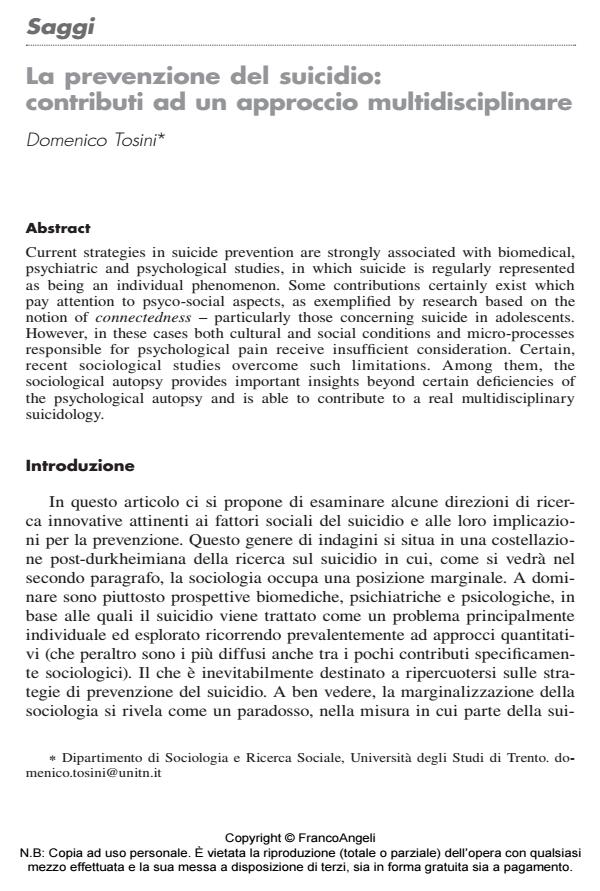La prevenzione del suicidio: contributi ad un approccio multidisciplinare
Journal title SICUREZZA E SCIENZE SOCIALI
Author/s Domenico Tosini
Publishing Year 2014 Issue 2014/3
Language Italian Pages 16 P. 23-38 File size 137 KB
DOI 10.3280/SISS2014-003003
DOI is like a bar code for intellectual property: to have more infomation
click here
Below, you can see the article first page
If you want to buy this article in PDF format, you can do it, following the instructions to buy download credits

FrancoAngeli is member of Publishers International Linking Association, Inc (PILA), a not-for-profit association which run the CrossRef service enabling links to and from online scholarly content.
Current strategies in suicide prevention are strongly associated with biomedical, psychiatric and psychological studies, in which suicide is regularly represented as being an individual phenomenon. Some contributions certainly exist which pay attention to psyco-social aspects, as exemplified by research based on the notion of connectedness - particularly those concerning suicide in adolescents. However, in these cases both cultural and social conditions and micro-processes responsible for psychological pain receive insufficient consideration. Certain, recent sociological studies overcome such limitations. Among them, the sociological autopsy provides important insights beyond certain deficiencies of the psychological autopsy and is able to contribute to a real multidisciplinary suicidology
Domenico Tosini, La prevenzione del suicidio: contributi ad un approccio multidisciplinare in "SICUREZZA E SCIENZE SOCIALI" 3/2014, pp 23-38, DOI: 10.3280/SISS2014-003003